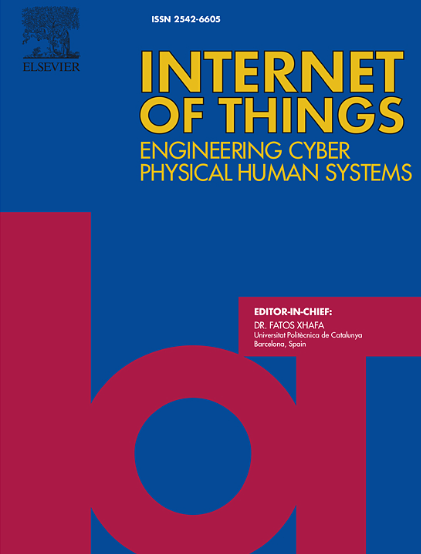A deep transfer learning-based blockchain-assisted cooperative network architecture for internet of unmanned any vehicle things
IF 7.6
3区 计算机科学
Q1 COMPUTER SCIENCE, INFORMATION SYSTEMS
引用次数: 0
Abstract
An Internet of Unmanned Any Vehicle Things (IUxVTs) enables cooperative operations among different unmanned vehicles, providing enhanced mission efficiency such as extended coverage, especially with the support of Internet of Things (IoT) sensors, edge computing, and dew computing. However, IUxVT communication encounters significant security and connectivity challenges. Conventional deep learning models are difficult to deploy effectively in dynamic mission environments due to their inability to adapt rapidly without extensive retraining, especially in remote areas with limited connectivity. To address these issues, this paper proposes a novel deep transfer learning (DTL)-based cooperative network architecture integrated with blockchain technology. Specifically, a lightweight blockchain and nonce-based authentication scheme were adopted to enhance protection against security threats, including spoofing, tampering, and unauthorized access. The DTL approach facilitates real-time model adaptation for IUxVTs without the need for extensive retraining, leveraging a dew computing-based delay-tolerant network for secure data storage and transmission. Experimental validation through a practical disaster rehabilitation and recovery scenario demonstrates that the proposed scheme significantly outperforms conventional methods, achieving over 97% model accuracy within fewer training epochs and reducing the training time by more than 30%. Additionally, the scheme effectively counters cybersecurity threats, showcasing robust resilience against unauthorized access and ensuring secure, low-latency data processing in dynamic and resource-constrained environments.
一种基于深度迁移学习的区块链辅助无人车物联网协同网络架构
无人驾驶车辆物联网(IUxVTs)能够实现不同无人驾驶车辆之间的协作操作,特别是在物联网(IoT)传感器、边缘计算和露水计算的支持下,提供更高的任务效率,如扩大覆盖范围。然而,IUxVT通信遇到了重大的安全和连接挑战。传统的深度学习模型很难在动态任务环境中有效部署,因为它们无法在没有广泛再培训的情况下快速适应,特别是在连接有限的偏远地区。为了解决这些问题,本文提出了一种基于深度迁移学习(DTL)并结合区块链技术的新型协同网络架构。具体地说,采用了轻量级区块链和基于随机数的身份验证方案来增强对安全威胁的保护,包括欺骗、篡改和未经授权的访问。DTL方法促进了iuxvt的实时模型适应,而不需要大量的再训练,利用基于露水计算的延迟容忍网络来安全存储和传输数据。通过实际灾难恢复和恢复场景的实验验证表明,该方案显著优于传统方法,在更少的训练周期内实现了97%以上的模型准确率,将训练时间缩短了30%以上。此外,该方案有效地应对网络安全威胁,展示了对未经授权访问的强大弹性,并确保在动态和资源受限的环境中安全、低延迟的数据处理。
本文章由计算机程序翻译,如有差异,请以英文原文为准。
求助全文
约1分钟内获得全文
求助全文
来源期刊

Internet of Things
Multiple-
CiteScore
3.60
自引率
5.10%
发文量
115
审稿时长
37 days
期刊介绍:
Internet of Things; Engineering Cyber Physical Human Systems is a comprehensive journal encouraging cross collaboration between researchers, engineers and practitioners in the field of IoT & Cyber Physical Human Systems. The journal offers a unique platform to exchange scientific information on the entire breadth of technology, science, and societal applications of the IoT.
The journal will place a high priority on timely publication, and provide a home for high quality.
Furthermore, IOT is interested in publishing topical Special Issues on any aspect of IOT.
 求助内容:
求助内容: 应助结果提醒方式:
应助结果提醒方式:


